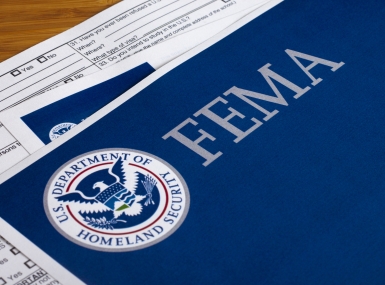Promising Practices for Collaboration on State and Local Opioid Settlement Spending

Upcoming Events
Related News
Between 2022 and 2040, states, counties and cities expect to receive over $50 billion in payments from the national opioid settlements. As settlement payments are disbursed in the coming years, continued state-local coordination is key to ensuring that these resources are effectively invested. Ongoing communication and information sharing at the state and local levels can improve alignment of efforts and resources, reduce duplication and ensure that settlement funds are directed to the areas of greatest need.
To highlight state and local collaboration on settlement spending, the National Association of Counties (NACo) and the National Academy for State Health Policy (NASHP) partnered to develop case studies in five geographically and politically diverse states that have demonstrated innovative approaches to collaboration within their own unique settlement structures. Through key informant interviews with state officials, county officials and county association leaders, NACo and NASHP identified examples of intergovernmental coordination across four domains:
- Sharing resources, expertise and learnings across jurisdictions
- Aligning settlement funding to address common priorities
- Developing mechanisms for ongoing coordination and communication, and
- Promoting transparency of funding decisions.
Through this process, NACo and NASHP identified examples of successful state-local coordination in opioid settlement administration as defined by state and local stakeholders. This resource contains case studies describing five unique state contexts and two key strategies supporting state-local coordination within each state. An overview of the strategies described in each case study is provided below.
- Regional councils align funding priorities between cities and counties in each region.
- Regional and state councils communicate through monthly calls and annual conference.
Indiana
- A grant matching program aligns funding priorities between state and local governments.
- An annual financial report provides transparency on all state and local expenditures, including expenditures by more than 600 units of local government.
Minnesota
- Required annual meetings between counties and adjacent cities promotes alignment of funding priorities.
- A public dashboard provides transparency on state and local government expenditures.
North Carolina
- An intergovernmental technical assistance team facilitates resource sharing between state and local governments.
- A public dashboard provides transparency on state and local government expenditures.
Virginia
- A state council communicates with local governments through multiple engagement mechanisms, including trainings, webinars, conferences and individualized outreach.
- The state council utilizes financial incentives to promote alignment of funding priorities with local governments.
- 2021 American Community Survey 1-Year Estimates. U.S. Census Bureau. n.d. Accessed March 11, 2024. https://www.census.gov/acs/www/data/data-tables-and-tools/data-profiles/2021.
- Drug Overdose Mortality by State. U.S. Centers for Disease Control and Prevention. Updated March 1, 2022. Accessed March 11, 2024. https://www.cdc.gov/nchs/pressroom/sosmap/drug_poisoning_mortality/drug_poisoning.htm#print
- Colorado Opioids Settlement Memorandum of Understanding (“MOU”). Office of the Colorado Attorney General; 2021. https://coag.gov/app/uploads/2021/10/1-Colorado-Opioid-MOU.pdf
- Colorado: Guide for Community Advocates on the Opioid Settlement. Vital Strategies and OpioidSettlementTracker.com; 2023. https://www.vitalstrategies.org/wp-content/uploads/Colorado-Opioid-Settlement-Fact-Sheet-V2.pdf
- 2023 Colorado Opioid Abatement Council Roster. Office of the Colorado Attorney General; n.d. https://coag.gov/app/uploads/2023/05/COAC-Roster-4.1.23.pdf
- House Enrolled Act No. 1001. General Assembly of the State of Indiana; 2023. https://www.in.gov/sba/files/HB1001.06.ENRS.pdf.
- Indiana: Guide for Community Advocates on the Opioid Settlement. Vital Strategies and OpioidSettlementTracker.com; 2023. https://www.vitalstrategies.org/wp-content/uploads/Indiana-Opioid-Settlement-Fact-Sheet-V2.pdf
- Opioid settlement match grant awardee overview. Indiana Family and Social Services Administration; n.d. https://www.in.gov/fssa/files/Opioid-Match-Grant-Awardee-Overview.pdf
- Local JRAC. IN.gov. n.d. Accessed March 11, 2024. https://www.in.gov/justice/local-jrac/
- National opioid settlement plan. Indiana Family and Social Services Administration; n.d. https://www.in.gov/recovery/files/National-Opioid-Settlement-Indiana-Plan.pdf
- H.F. No. 400. State of Minnesota House of Representatives; 2019. https://wdoc.house.leg.state.mn.us/leg/LS91/HF0400.6.pdf
- Amended Minnesota opioids state-subdivision memorandum of agreement. The Office of the Minnesota Attorney General; n.d. https://www.ag.state.mn.us/opioids/docs/MN_MoA.pdf
- Opioid Epidemic Response Advisory Council. Minnesota Department of Human Services. n.d. Accessed March 11, 2024. https://mn.gov/dhs/opioids/oer-advisory-council.jsp
- Minnesota: Guide for Community Advocates on the Opioid Settlement. Vital Strategies and OpioidSettlementTracker.com; 2023. https://www.vitalstrategies.org/wp-content/uploads/Minnesota-Opioid-Settlement-Fact-Sheet.pdf
- Opioid Epidemic Response Advisory Council: Grant Award Update & Evidence-Based Analysis of Opioid Legislative Appropriations. Minnesota Department of Human Services, n.d. Accessed March 11, 2024. https://www.lrl.mn.gov/docs/2022/mandated/220696.pdf
- Memorandum of agreement between the State of North Carolina and local governments on proceeds relating to the settlement of opioid litigation. More Powerful NC; n.d. https://www.morepowerfulnc.org/wp-content/uploads/2023/07/Final-Opioid-MOA-rev-July-2023-re-Ex-E-and-F.pdf
- North Carolina: Guide for Community Advocates on the Opioid Settlement. Vital Strategies and OpioidSettlementTracker.com; 2023. https://www.vitalstrategies.org/wp-content/uploads/Virginia-Opioid-Settlement-Fact-Sheet-V2.pdf
- Opioid settlement assistance. North Carolina Association of County Commissioners; n.d. Accessed March 11, 2024. https://www.ncacc.org/services-for-counties/ncacc-strategic-member-services/opioid-settlements-assistance/
- A State-by-State Look at the 1998 Tobacco Settlement 25 Years Later. Campaign for Tobacco-Free Kids; 2018. https://www.tobaccofreekids.org/what-we-do/us/statereport
- Virginia opioid abatement fund and settlement allocation memorandum of understanding. NationalOpioidSettlement.com; n.d. https://nationalopioidsettlement.com/wp-content/uploads/2021/10/VA-Opioid-Abatement-Fund-and-Settlement-Allocation-MOU1.pdf
- Virginia: Guide for Community Advocates on the Opioid Settlement. Vital Strategies and OpioidSettlementTracker.com; 2023. https://www.vitalstrategies.org/wp-content/uploads/Virginia-Opioid-Settlement-Fact-Sheet-V2.pdf
Opioid Solutions Center
NACo's Opioid Solutions Center empowers local leaders to invest resources in effective treatment, recovery, prevention and harm reduction practices that save lives and address the underlying causes of substance use disorder.


Opioids: How Settlement Dollars Advance City and County Opioid Abatement
Building on a strong history of collaboration, including the National City-County Task Force on Opioids, NACo and the National League of Cities examined preliminary data on the distribution of opioid settlement dollars across cities, counties and states. This brief highlights how cities and counties are working together to abate the overdose crisis, including pooling opioid settlement funds to create a more comprehensive system of care for people with substance use disorder.

Advancing Health Equity Through County Opioid Abatement Strategies
To support counties with utilizing opioid settlement funds to advance health equity, NACo developed case studies on five counties that are integrating opioid settlement funds into ongoing health equity initiatives. This resource details steps taken by these counties during the first year of opioid settlement payments and considerations for counties in other jurisdictions.

Five Questions for Counties Considering Harm Reduction as an Opioid Abatement Strategy
For America’s counties, harm reduction complements prevention, treatment and recovery services to create a more holistic and effective system of care.
Featured News

CMS releases details on the Rural Health Transformation Program
On September 2, the Centers for Medicare & Medicaid Services (CMS) released additional details on the Rural Health Transformation (RHT) Program, overviewing program goals, requirements and timelines.

House T&I Committee passes bipartisan FEMA reform package with major wins for counties
The House Transportation and Infrastructure Committee released the bipartisan Fixing Emergency Management for Americans (FEMA) Act

Counties encouraged to apply for newly established HHS Healthcare Advisory Committee
On August 22, the U.S. Department of Health and Human Services (HHS) announced the creation of a new Healthcare Advisory Committee, aimed at providing expert guidance on pressing healthcare challenges. This new committee represents an important opportunity for counties to have a voice in shaping federal healthcare policy.